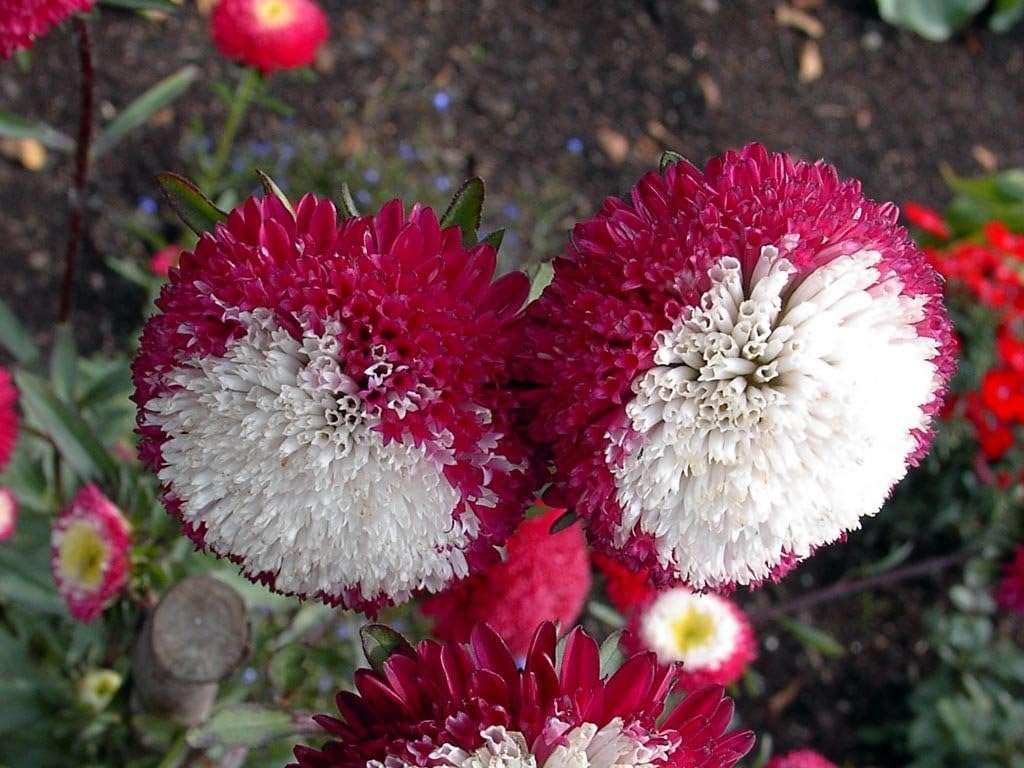Winter may seem like a dreary time when everything is dead or dormant, but there are quite a few plants that flower even in the coldest months. Their colorful blooms and sweet fragrances can brighten up your garden and bring some life during the winter. Here is an overview of some of the best winter-flowering plants you can grow to add cheer all season long.
Bright Winter Blooms
Some of the most popular winter-flowering plants produce flowers that bloom from late fall through early spring. These give your outdoor spaces a welcome pop of color when most other plants are bare.
Pansies
Pansies are pretty, delicate-looking flowers that come in a wide range of colors. The cheerful faces of these blooms will lift your spirits on cold winter days. Pansies grow well in pots and planters, so you can display them on patios, porches, and decks even when the ground is frozen solid.
Violas
Closely related to pansies, violas produce abundant blooms in shades of purple, yellow, white, and blue. These hardy flowers handle cold weather very well. Plant violas in containers near walkways and entryways where you can appreciate their beauty all winter long.
Ornamental Kale
The frilly, ruffled leaves of ornamental kale add unique texture and visual interest to winter landscapes. Varieties like White Peacock and Redbor kale produce colorful tones of purple, pink, white, and green. Use ornamental kale as edging plants or grow them in containers on patios and porches.
Hellebores
Also known as Lenten rose and Christmas rose, hellebores bloom in late winter and early spring. The downfacing, rose-like flowers come in shades of white, pink, burgundy, and green. Hellebores make great ground cover plants. They look beautiful planted in groups below trees and shrubs.
Fragrant Winter Blooms
Many winter-flowering plants also release heavenly fragrances that scent the chilly air. Here are some of the most fragrant winter bloomers for your garden.
Hyacinths
Hyacinths fill indoor and outdoor spaces with an intense, sweet aroma in late winter and early spring. The cone-shaped flower clusters come in shades of pink, purple, yellow, white, and blue. Plant hyacinth bulbs in fall in garden beds or containers. Display forced bulbs indoors to enjoy their beauty and fragrance all season.
Witch Hazel
Witch hazel shrubs produce clusters of spidery, yellow flowers with a light, fresh scent. Different varieties of witch hazel bloom at different times from December through March. Place witch hazel shrubs along walkways or near patios and entryways so you can appreciate their flowers' appearance and fragrance during winter strolls.
Sweetbox
Also called sarcococca, sweetbox is an evergreen shrub valued for its extremely fragrant winter blooms. Tiny white flowers emerge along the stems in late winter and release a scent reminiscent of honey and vanilla. Plant sweetbox near doors, walkways, and outdoor living areas.
Winter Honeysuckle
This semi-evergreen honeysuckle blooms abundantly in late winter with white and yellow tubular flowers. It fills the air with its sweet, honey-like fragrance. Grow winter honeysuckle trellised against fences and walls or as an informal hedge. It’s great for training up arches and supports in outdoor rooms.
Hardiest Winter Blooms
Some plants are cold hardy even in extremely frigid winter climates. Here are a few of the toughest winter bloomers for northern gardens.
Snowdrops
Delicate snowdrops push their way up through frozen ground as early as January in some regions. The nodding white flowers appear on short stems just above grass-like leaves. Snowdrops naturalize readily, creating a white drift that spreads over time. Plant them under trees and shrubs where you’ll appreciate their subtle beauty.
Winter Aconite
Buttery yellow winter aconite flowers bloom in late winter, sometimes while snow still covers the ground. The cup-shaped blooms appear on short stems above ruffled green leaves. Winter aconite goes dormant by summer. Mass plantings of this tuberous perennial create cheerful carpets of color in late winter and early spring.
Sweet Violets
Sweet violets spread readily to form large mats or ground covers. The five-petaled purple, blue, or white flowers have a light, sweet scent. Hardy sweet violets bloom in late winter and early spring, even under snow cover in many regions. Plant them under trees and shrubs or use them as edging plants in garden beds and pathways.
Crocus
Early flowering crocus bulbs push up bright yellow, purple, and white blooms while late winter frosts are still common. Shorter varieties like Tommasinianus crocus thrive in lawns and grassy areas where thelow flowers still stand out colorfully. Plant large drifts of crocus bulbs for a more dramatic display.
Unique Winter Bloomers
Some winter-flowering plants have very unusual or atypical flowers. Here are a few of the most peculiar winter blooms.
Witch Hazel
Witch hazel's spidery yellow blooms look almost otherworldly, with their thin, twisted petals dangling off bare branches in winter. The shrub flowers from October to March, depending on the variety. Place it in a prominent place in your landscape where you can enjoy its unique winter beauty.
Snowflake
True to its name, the snowflake plant produces white flowers that dangle on thin pedicels, resembling snowflakes drifting on the wind. Blooms emerge from late fall through early spring. Snowflake makes an unusual flowering groundcover. Plant it at the front of borders or let it cascade down slopes and walls.
Winter Daphne
This compact evergreen shrub blooms from late winter into early spring. Clusters of small, star-shaped pink or white flowers with a sweet fragrance line the stems. Upright varieties work well in foundation plantings, while low-growing kinds are ideal for edging and rock gardens.
Witch Alder
Also called winterbloom, this large shrub flowers from late fall into winter with puffy catkins made up of tiny blooms. The male catkins are yellow, while the female ones take on rosy hues. Witch alder makes a striking specimen plant for winter landscapes, especially when planted against a contrasting backdrop.
Extending the Bloom Season
While winter may seem bleak and dreary at times, you can brighten up your landscape by planting winter-flowering plants. Choose a variety of blooms with different flower forms, colors, and fragrances to create interest from late fall through early spring. Plant some of these beauties in containers on patios and decks so you can enjoy their beauty up close, even during frigid weather. With the right selection of plants, your garden can captivate with floral beauty all winter long.
Table Comparing Winter Blooms
| Plant | Bloom Time | Height | Color | Fragrance |
|---|---|---|---|---|
| Pansy | Fall-Spring | 6-9 inches | Wide variety | Very light |
| Viola | Fall-Spring | 3-6 inches | Purple, yellow, blue, white | Light, sweet |
| Ornamental Kale | Fall-Spring | 12-18 inches | Green, pink, purple, white | None |
| Hellebore | Late Winter-Early Spring | 12-18 inches | White, pink, green, burgundy | None |
| Hyacinth | Late Winter-Early Spring | 6-12 inches | Blue, pink, purple, yellow, white | Sweet, intense |
| Witch Hazel | December-March | 8-15 feet | Yellow | Fresh, light |
| Sweetbox | Late Winter | 3-6 feet | White | Strong, sweet |
| Winter Honeysuckle | Late Winter | 10-20 feet | White, yellow | Sweet, honey-like |
| Snowdrop | January-March | 3-6 inches | White | None |
| Winter Aconite | Late Winter-Early Spring | 3-6 inches | Yellow | None |
| Sweet Violet | Late Winter-Early Spring | 4-6 inches | Purple, blue, white | Light, sweet |
| Crocus | Late Winter-Early Spring | 3-6 inches | Yellow, purple, white | None |
| Witch Hazel | October-March | 15-20 feet | Yellow | None |
| Snowflake | Fall-Early Spring | 1-2 feet | White | None |
| Winter Daphne | Late Winter-Early Spring | 1-3 feet | Pink, white | Sweet |
| Witch Alder | Fall-Winter | 10-15 feet | Yellow catkins, pink catkins | None |
Winter Container Gardens
Creating a winter container garden is a great way to add color and interest to outdoor areas during the coldest months. Here are some tips for putting together eye-catching displays:
-
Use cold-tolerant plants like pansies, violas, ornamental kale and cabbages, heathers, and evergreens. Choose compact, low-growing varieties.
-
Incorporate interesting branches, twigs, and seed pods for height, structure, and visual interest when plants aren't in bloom.
-
Include cool-toned plants with blue-green, gray-green, purple, and burgundy foliage to complement winter's neutral palette.
-
Use decorative containers like glazed ceramics, galvanized metal, and weathered terra cotta. Make sure containers have drainage holes.
-
Display in protected areas like porches, patios, and covered entryways where they'll be sheltered from harsh winds and heavy snow loads.
-
Group pots together for a cohesive display. Repeat plants and colors in different sized containers for harmony.
-
Add winter cheer with festive ribbon, pine cones, berries, mini lights, and holiday ornaments. Switch out decorations for the seasons.
With the right plant choices and creative combinations, you can enjoy stunning container gardens even during the dormant winter months. They're sure to brighten up your outdoor living areas all season long.
Caring for Winter Containers
Winter container gardens require a little extra care to thrive through harsh weather:
-
Water sparingly since plants are dormant but don't let soil dry out completely.
-
Remove spent blooms and faded foliage to keep plants looking their best.
-
Watch for freezing and thawing cycles that can push plants out of pots. Replant as needed.
-
Place in protected locations or move pots to unheated garages or sheds to protect from severe cold snaps.
-
Insulate roots by mounding mulch like evergreen boughs or pine needles around bases of containers.
-
Apply anti-desiccant spray to minimize winter burn on evergreen foliage.
-
Provide support for tall plants vulnerable to snapping in heavy snow and winds.
-
Fertilize lightly, if at all, during winter months when growth is minimal.
-
Enjoy seasonal interest by replacing plants with fresh blooms and greenery when they decline.
With proper siting and care, your winter pots can provide months of beauty from the comfort of your patio or garden room. A bit of maintenance will keep them thriving until spring blooms return.
Favorite Winter Container Combinations
Here are a few fun combinations for creating striking winter container displays:
Holiday Charm – Spruce or juniper, winterberries, white pansies, mini white twinkle lights
Winter Wonderland – Dusty miller, ornamental kale, evergreen boughs, birch branches
Cool Contrast – Yellow violas, purple heuchera, blue-green eucalyptus
Southern Charm – Pink camellias, dwarf nandina, blue pansies
Frosty Ferns – Assorted ferns, silver sage, white cyclamen
Warm Welcome – Yellow pansies, red twig dogwood, mixed evergreens
Sparkling Snowfall – White cyclamen, variegated ivy, white fairy lights
Season's Greetings – Mixed ornamental peppers, pinecones, red twig dogwood
Let your imagination run wild playing with colors, textures, and seasonal embellishments to create stunning container combinations guaranteed to lift your winter spirits. The possibilities are endless!

